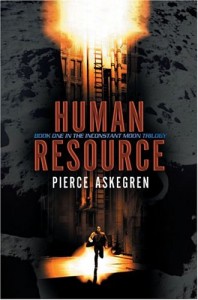 When Erik Morrison is transferred by his company to Villanueva Base, a corporation-controlled city which acts as the center of civilization for the Moon, he understands that it’s both a last-ditch effort to redeem his dying career, and a chance to make his mark on things. His bosses at EnTek have a mission for him, but aren’t clear about spelling it out. As a result, Erik’s forced to do some investigating and stone-overturning. What caused his predecessor as Site Coordinator to abruptly jump ship to a rival corporation? What secrets are people hiding? And what does the intriguing Wendy Scheer want with him? There are many different games being played out on the Moon, as factions within factions plot and plan and scheme, all under a civilized veneer of supposed cooperation. Somewhere out there is a man with a vital clue to a puzzling mystery, and everyone wants him. It’s into this den of corporate intrigue that Erik has walked, and if he doesn’t get a clue fast, he’ll be out in the cold. Permanently.
When Erik Morrison is transferred by his company to Villanueva Base, a corporation-controlled city which acts as the center of civilization for the Moon, he understands that it’s both a last-ditch effort to redeem his dying career, and a chance to make his mark on things. His bosses at EnTek have a mission for him, but aren’t clear about spelling it out. As a result, Erik’s forced to do some investigating and stone-overturning. What caused his predecessor as Site Coordinator to abruptly jump ship to a rival corporation? What secrets are people hiding? And what does the intriguing Wendy Scheer want with him? There are many different games being played out on the Moon, as factions within factions plot and plan and scheme, all under a civilized veneer of supposed cooperation. Somewhere out there is a man with a vital clue to a puzzling mystery, and everyone wants him. It’s into this den of corporate intrigue that Erik has walked, and if he doesn’t get a clue fast, he’ll be out in the cold. Permanently.
Human Resource is the first part of Pierce Askegren’s Inconstant Moon trilogy, and as a result, suffers somewhat from being mostly set-up. It takes a while for the plot to really shake itself out and get moving; much of the book is simply Erik Morrison and Wendy Scheer maneuvering around one another, as bits and pieces of the larger storyline reveal themselves. It’s not until the very end of Human Resource that we begin to get hard facts, after several hundred pages of dancing around hints and suggestions. Askegren gives us a fascinating world, one I can imagine quite easily. It makes sense that the Moon might end up colonized by corporations more than nations. After all, they go where the money’s to be made.
While the main characters, Morrison and Scheer, are both interesting, I admit that I found it hard to actually like either of them for the longest time. Morrison is an arrogant control freak who doesn’t want to be where he is, and Scheer is a manipulative femme fatale who plays more games than she really should, with everyone. They’re not exactly what you’d think of as sympathetic, yet somehow, by the end of the book, they seem to mellow and let their vulnerabilities show when in close proximity of one another.
Overall, I think that Human Resource shows a lot of potential; Askegren clearly has a larger vision in mind, and is gradually revealing parts of an interesting mystery. However, this is a series that clearly needs to be addressed as a whole, rather than individually. I’ll be looking forward to the next two books in the trilogy to see where things are going, and how it all ties together in the end.
Originally posted on SF Site, 2005
